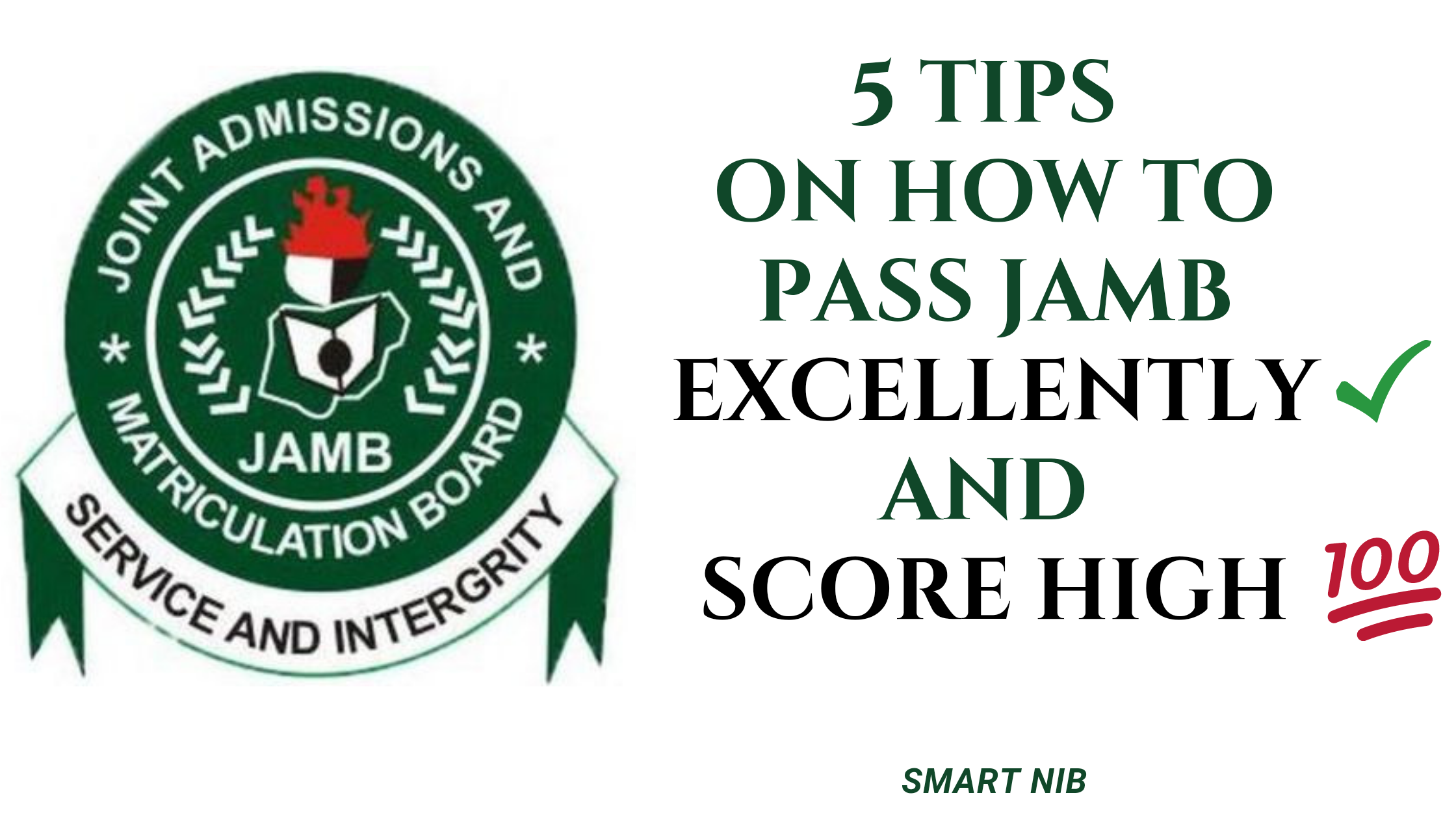Are you looking to clear JAMB with ease? This article will provide you with 5 Tips on How to pass JAMB Excellently and Score High. These tips can also be implemented for every other exams as the steps aren’t solely for JAMB. JAMB CBT can be described as the most recent method Joint Admission and Matriculation Board (JAMB) used to test its candidates.
These are steps to follow and how to be successful in passing JAMB CBT with success:
(1) Learn thoroughly before writing your UTME
For JAMB CBT examinations, past questions are required in two ways. First, it acts as a way of getting students more familiar with the method in which questions are created and helps to prepare your mind to know what you should be looking for when studying.
In addition, most of the time, the questions from past exams are rewritten over the course of subsequent years, meaning it’s a sort of ‘legal exposure’ because you’ve had the opportunity to see the JAMB past questions before the test.
Another factor is the habit of studying regularly to be able to refresh your brain by reviewing your textbooks and notes in order to review your knowledge. With this, you are likely to recall things better.
To use English, Build your vocabulary and dictionaries since it will aid you with the synonyms and antonyms section. What are the best ways to build your vocabulary? If you are going through prior questions, make sure you have the dictionary, a text and a pen with you. This will allow you to look for a difficult word and understand its use in context by recording it and not forgetting it.
A few students are thinking about the best way to prepare for JAMB. This suggestion will answer the question of what to study for JAMB. Previous questions can guide you through the method JAMB uses to formulate their questions, as well as the areas that appear most often. I suggest you keep an eye on the areas in which JAMB frequently ask questions, and you’ll see yourself scoring highly. For students writing Mathematics, be sure to pay focus on differentiation, integration and binomial expansion, the sequence words, permutation, combination circles, probability and many more.
(2) Take a break and remain calm
Don’t let the fear of the exam take a grip on you once you enter the exam hall. It is possible that you will forget what you’ve read and make you lose your focus. A deep breath can assist you in getting rid of the fearful emotion.
(3) Build a Time Budget
Any time you take an exam, it is important to be aware of the number of minutes you must be able to devote to the current exam before moving on to the next. This will surely assist you in passing JAMB.
Set extremely strict time limits for every query.” This method will help in the avoidance of time problems. It helps you stay to the point and keeps the need to spend excessive time on a particular issue. One of the most effective ways to maintain the sharpness of your mind is to establish an outline of your time.
The first step is to take the time allocated to the test and subtract 10 minutes. Then, divide this number times the number of questions. This will determine the time you’ll need to dedicate to each prompt. This gives you a buffer of safety. You’ll need a few more minutes in order to be capable of double-checking your answers once you’re completed.
A tip: Making the time budget will increase your speed and precision. Do not dwell too long on an issue; there’s no penalty for guessing and then moving forward (No positive marking).
Read Also:
20 Reasons why students fail exam
100 Questions And Answers On The Life Changer JAMB Novel
Analysis of The Life Changer JAMB Novel 2022 PDF
Free Download of JAMB Past Questions and Answers PDF for all Subjects
(4) Start from easy to hard
The best method of tackling an exam is to try to answer the questions that are easiest first. That’s exactly the way to go. Begin by answering the most attainable questions first before moving on to the tough ones. Do not be concerned if this results in you fumbling around on the test–most of the time, the given order isn’t relevant.
It is important to keep in mind that there’s no specific order to write JAMB CBT. It is possible, to begin with, any topic you think is easy and then move on to the more difficult ones.
Tips for Science students, particularly those who are studying maths, Physics and Chemistry, formulas are essential to solve every calculation. When you come across a question that requires calculations, first pull to light all parameters provided and then attempt to understand the subject matter that this question was derived from. Once you’ve done this, discover how the parameters relate, and this is where the application of formulas come in. If you can do this, your chances of finding the correct answer are greater.
(5) God factor
This isn’t something to be understated. The only one who can dot your I’s and cross your T’s. In addition, he is able to silence any other things that are beyond your reach. Make a commitment to your studies each day to His care and ask Him to grant you the grace to comprehend, read and remember.
Read Also:
20 Reasons why students fail exam
100 Questions And Answers On The Life Changer JAMB Novel
Analysis of The Life Changer JAMB Novel 2022 PDF
Free Download of JAMB Past Questions and Answers PDF for all Subjects
Frequently Asked Questions About JAMB
What is the highest score in JAMB history?
IN CONCLUSION:
The goal of scoring 300+ marks on the JAMB 2022 exam JAMB 2022 is going to be simpler for you if you adhere to the above guidelines and suggestions.
You can be assured that nothing will prevent you from getting through this exam. JAMB CBT exam in 2022.
It’s all about determination.
Our biggest flaw is when we give up.
The best method of achieving success is to attempt another time.
We are driven by the determination to enhance ourselves, to make positive changes to our lives and enhance our odds of being successful.
It allows us to create hopes, live better lives and improve relationships with other people.
Determination encourages us to dream larger and to achieve even more in our lives.
If we look up to hardworking, successful people as models, we boost the fire of our drive and keep us motivated to achieve new goals.
We’ve so far given you the most inspirational advice to inspire you to pursue your desires!
Remember to score 300+ on the JAMB 2022, you must begin your preparation is crucial.



